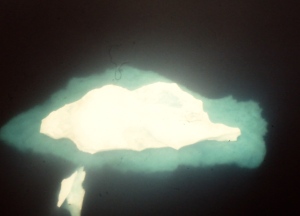Around the World and Through the Lens
Category: Arctic Lands: Greenland, Iceland, Norway, Sweden
October 20, 2011
Arctic Emerald
by 2cornucopias
October 20, 2011
Ice Cruiser
by 2cornucopias
October 18, 2011
More Than Meets the Eye
by 2cornucopias
October 18, 2011
Greenland Industry
by 2cornucopias
October 18, 2011
No Fuss, No Muss Refrigerator/Freezer
by 2cornucopias
October 18, 2011
Deceptive Advertising
by 2cornucopias

The earliest settlers in what we call Iceland today launched a deceptive propaganda campaign to keep raiders and settlers from coming to Iceland. They spread the word that Iceland was covered with ice but that there were green fields in neighboring Greenland. Finding the contrary, the deceived moved westward and settled in what they called New Found Land and we term: Newfoundland, which is part of Canada today.
October 18, 2011
Raiding Icelanders
by 2cornucopias

While in Iceland, I read the Sagas of the Icelandic seamen. Raiding was a major occupation during the months that their country was virtually locked in by ice. They would depart before the deep winter set in, heading south in search of booty. One group used the Volga River as its avenue to the Mediterranean. Having reached a walled city in the Italian peninsula, they found the walls unbreacheable. Astute as they were, the pondered the situation. Noting that every morning the birds who nested under the eaves of the thatched roofs flew into the nearby woods to obtains sustenance for their fledglings, they set their fowlers to catch them. Having caught a substantial number, the falconer proceeded to deposit a wad of wax with a wick onto their backs. Setting the wick alight, the anxious birds flew back to the town and incinerated the thatched roofs. Running out of the town for safety, the raiders strode in as conquerors, looted, and headed for home in the late Spring laden with their “catch”.
October 18, 2011
Leif and Eric, Nordic Outlaws
by 2cornucopias

Icelandic church in shape of Viking Ship, with statue of Leif Ericson. He was born in Iceland circa 970 AD. He was the son of an outlaw, Eric the Red, who himself was the son of an outlaw. According to Saga of Icelanders, Leif established a Nordic settlement in Vineland and was the first European to land in the New World
.
October 18, 2011
Sea Raiders
by 2cornucopias

Norsemen explored to the West and East of Norway and even down into the Mediterranean. While Barbarians were at a primitive level of society, they nevertheless had sharp minds which gleaned knowledge from their surroundings and from their observations of what they saw and pondered. Norsemen, having traveled southeastward on the arteries of rivers like the Volga, often found themselves in Byzantium. Having attended the liturgy at St. Sophia, they left impressed with the grandeur and beauty of Christian worship. Yet, at times they turned this experience into a ruse for conquest. A brigade of Norsemen sought to take a Sicilian town, but its formidable walls frustrated their efforts. So, they developed a clever scheme. One of the leaders approached the townsmen and asked permission to hold a burial service in their church to commend their chieftain to God in the Christian manner as they had observed in Constantinople. Permission was granted on the condition the funeral retinue would enter unarmed. The large chieftain was brought in lying in an open wooden coffin and placed in the center of the main aisle of the church. Then, began the long liturgical ritual. Suddenly, towards the end of the ceremony, the corpse catapults from his coffin to the horror and confusion of the townspeople. The chieftain, precisely drugged into catatonia, had been laid on a bed of swords. Now, his men quickly drew swords from under where the ‘corpse’ laid and decimated the congregation. ps. Often, the leader of an expedition was buried in his ship.





